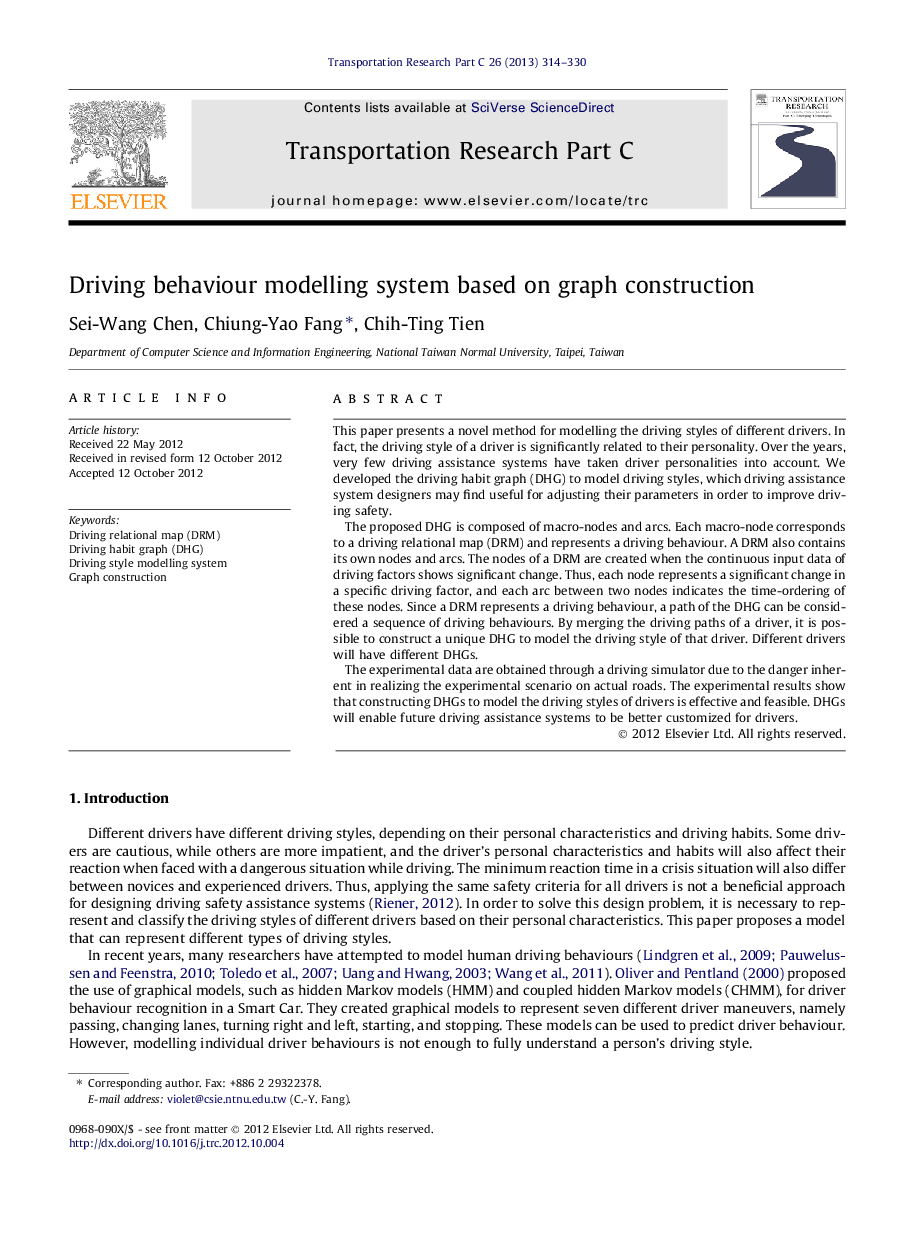| Article ID | Journal | Published Year | Pages | File Type |
|---|---|---|---|---|
| 525074 | Transportation Research Part C: Emerging Technologies | 2013 | 17 Pages |
This paper presents a novel method for modelling the driving styles of different drivers. In fact, the driving style of a driver is significantly related to their personality. Over the years, very few driving assistance systems have taken driver personalities into account. We developed the driving habit graph (DHG) to model driving styles, which driving assistance system designers may find useful for adjusting their parameters in order to improve driving safety.The proposed DHG is composed of macro-nodes and arcs. Each macro-node corresponds to a driving relational map (DRM) and represents a driving behaviour. A DRM also contains its own nodes and arcs. The nodes of a DRM are created when the continuous input data of driving factors shows significant change. Thus, each node represents a significant change in a specific driving factor, and each arc between two nodes indicates the time-ordering of these nodes. Since a DRM represents a driving behaviour, a path of the DHG can be considered a sequence of driving behaviours. By merging the driving paths of a driver, it is possible to construct a unique DHG to model the driving style of that driver. Different drivers will have different DHGs.The experimental data are obtained through a driving simulator due to the danger inherent in realizing the experimental scenario on actual roads. The experimental results show that constructing DHGs to model the driving styles of drivers is effective and feasible. DHGs will enable future driving assistance systems to be better customized for drivers.
► This paper presents a driving habit graph (DHG) to model the driving styles of different drivers. ► The proposed DHG is composed of macro-nodes and arcs. ► Each macro-node corresponds to a driving relational map (DRM) and represents a driving behaviour. ► A DRM also contains its own nodes and arcs. ► Since a DRM represents a driving behaviour, a path of the DHG can be considered a sequence of driving behaviours. ► By merging the driving paths of a driver, it is possible to construct a unique DHG to model the driving style of that driver. ► DHGs will enable future driving assistance systems to be better customized for drivers.
